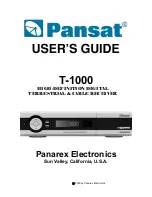
NOTES ON INSTALLATION.
Your NAD T 760 should be placed on a firm, level
surface. Avoid placing the unit in direct sunlight or
near sources of heat and damp.
Allow adequate ventilation. Do not place the unit on
a soft surface like a carpet. Do not place it in an
enclosed position such a bookcase or cabinet that
may impede the air-flow through the ventilation slots.
Make sure the unit is switched off before making
any connections.
The RCA sockets on your NAD T 760 are color
coded for convenience. Red and white are Right and
Left audio respectively, orange for digital input, yellow
for Video Composite and NAD Link.
Use high quality leads and sockets for optimum
performance and reliability. Audio RCA leads will
function correctly for video signals, although it is rec-
ommended to use dedicated video leads where pos-
sible. For the digital inputs use dedicated leads for
digital signal transfer. Ensure that leads and connec-
tors are not damaged in any way and all connectors
are firmly pushed home.
For best performance, use quality speaker leads of
16 gauge (1.5mm) thickness or more.
If the unit is not going to be used for some time,
disconnect the plug from the AC socket.
Should water get into your NAD T 760, shut off the
power to the unit and remove the plug from the AC
socket. Have the unit inspected by a qualified service
technician before attempting to use it again.
Do not remove the cover, there are no user-ser-
viceable parts inside.
Use a dry soft cloth to clean the unit. If necessary,
lightly dampen the cloth with soapy water. Do not use
solutions containing benzol or other volatile agents.
REAR PANEL CONNECTIONS (Figure 1.)
1. FM & AM ANTENNA
AM ANTENNA
An AM loop antenna is supplied with the T 760 and
is required for AM reception. Open the clip terminal
lever and insert the wire from the antenna. Closing
the lever will lock the wire in place (Fig. 5). Test vari-
ous positions for the antenna, but always ensure the
loop is placed vertically for best reception. Placing the
antenna close to large metal items such as metal
shelves or radiators may interfere with reception.
NOTE:
When reception is not satisfactory using the sup-
plied AM loop antenna alone, connection of an exter-
nal antenna is recommended. Do not connect any-
thing other than a loop antenna to the AM ANTENNA
terminal. Do not remove the AM loop antenna. The
antenna cable to the loop antenna must not exceed 3
meters.
FM ANTENNA
A ribbon wire FM antenna is included and should
be connected to the FM connector at the rear of the
unit (Fig. 4) using the ‘balun’ adapter supplied. The
ribbon aerial should be mounted on a vertical surface
and placed so that it forms a ‘T’.
Experiment with placement of the antenna to find
the position that gives the best signal strength and
lowest background noise. An inadequate FM signal
normally results in high levels of hiss, especially in
stereo, and interference from external electrical
sources. In areas of poor FM reception, the tuner
section’s performance can be improved by using an
externally mounted FM antenna. A qualified aerial
installer will be able to advise and fit a recommended
aerial for your reception conditions.
2. AM STEPPING FREQUENCY
Worldwide models are equipped with a switch that
controls the AM band tuning steps. Please set this
switch to match the AM band tuning step frequency
as below:
• 120V version : 10kHz
• 230V version : 9kHz
3. TAPE 1 & CD INPUT
TAPE 1
Connections for analogue recording and playback
to an audio tape recorder of any type, such as a cas-
sette, reel-reel, DAT, MD or DCC. Using twin RCA-to-
RCA leads, connect to the left and right ‘Audio
Output’ of the tape machine to the TAPE 1 IN con-
nectors for playback. Connect the left and right ‘Audio
Input’ of the tape machine to the TAPE 1 OUT con-
nectors for recording.
CD INPUT
Input for CD player (analogue audio signal) or other
line-level signal source. Use a twin RCA-to-RCA lead
to connect the CD player’s left and right ‘Audio
Outputs’ to this input.
4. 5.1 CHANNEL INPUTS
Inputs for the multi-channel audio signals from an
external decoder, such as an MPEG decoder or a
DVD player with integrated decoder. Use two twin
RCA-to-RCA lead to connect the decoder’s front left
and right ‘Audio Outputs’ to the Front left and right
inputs, and the decoder’s Surround left and right out-
puts to the Surround left and right inputs. Use a third
twin RCA-to-RCA lead to connect the decoder’s sub-
woofer output to the Subwoofer input and the
decoder’s Center channel output to the Center chan-
nel input. Make sure you to follow color coding of the
plugs to ensure that both Center and Subwoofer are
connected correctly, for instance, use the red plugs at
either end to connect the center channel and the
white plugs for the subwoofer channel.
NAD
8
GB
NAD T 760 SURROUND SOUND RECEIVER









































